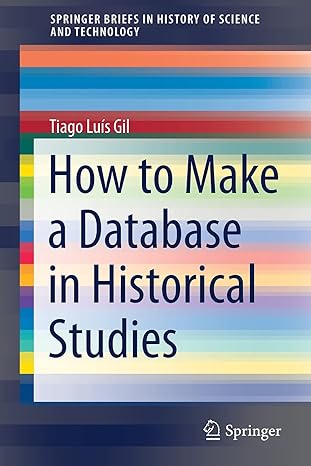Question
The History of the Compass 1) The compass is a simple enough devicesomething you can make yourself with an iron needle and a magnet. Yet
The History of the Compass
1) The compass is a simple enough devicesomething you can make yourself with an iron needle and a magnet. Yet it was also a revolutionary device, allowing sailors (and now, airplane pilots) to maintain a sense of direction no matter how dark, stormy, foggy, or unfamiliar the environment. 2) Though there has been debate about the origins of the compass, the instrument was clearly developed first by the Chinese. Chinese scientists may have had some knowledge of magnetic principles as early as the 1st century. Actual compasses may have been developed during the Tang dynasty. They undoubtedly originated from the discovery of naturally magnetized iron, or lodestone, which could then be used to fashion a needle that would point north. Some believe that the Chinese first used compasses in the practice of feng shui, which was a set of design principles by which people could align their living quarters with the forces of nature. 3) Compasses for navigation had been introduced by 1100. They were part of a growing Chinese effort to make contact with sources of spices and teas in southeast Asia. Prior to that point, Chinese seagoing had been confined to coastlines, but now it became much more venturesome. Wide-ranging Chinese expeditions introduced the compass to seafarers throughout the Indian Ocean, including Arab merchants, by the 12th century. Europeans are first known to have used the compass in 1187. Europeans may have invented the compass separately, but it is far more likely that they learned about its use as a result of contacts with Arabs or Asians. 4) The compass was fundamental to ambitious seagoing expeditions, like the great Chinese voyages throughout the Indian Ocean. Along with observation of the sun and stars, the compass provided the guidance for Columbus's travels to the Americas. It changed the shape of world history by facilitating dramatic new contacts and exchanges. Stearns et al., World Civilizations: The Global Experience, p. 438
Question 1 (1 point)

The most useful guide question for this selection is:
Question 1 options:
| Who first developed the compass? | |
| When were compasses first developed? | |
| When were compasses first used for navigation? | |
| What is the history of the compass? |
Save
Question 2 (1 point)

The primary organization pattern of this selection is
Question 2 options:
| definition. | |
| classification. | |
| chronological order. | |
| process. |
Save
Question 3 (1 point)

According to the selection, the Chinese used compasses for navigation in an effort to
Question 3 options:
| make contact with sources of spices and teas. | |
| introduce other cultures to the practice of feng shui. | |
| improve their observations of the sun and stars. | |
| expand their travels to the Americas |
Save
Question 4 (1 point)

The compass was revolutionary because it
Question 4 options:
| expanded seagoing expeditions. | |
| facilitated new contacts and exchanges. | |
| enabled navigation in unfamiliar environments. | |
| did all of the above. |
Save
Question 5 (1 point)

If you created a time line for this selection, the last event would be:
Question 5 options:
| The use of compasses by seafarers throughout the Indian Ocean. | |
| The introduction of compasses for navigation. | |
| Europeans first known use of the compass. | |
| The discovery of naturally magnetized iron, or lodestone. |
Save
Question 6 (1 point)

The authors' purpose in this selection is to
Question 6 options:
| inform readers about the compass. | |
| debate the origins of the compass. | |
| promote the use of the compass. | |
| question the practice of feng shui. |
Save
Question 7 (1 point)

In paragraph 2, the word align means
Question 7 options:
| eliminate. | |
| flatten. | |
| balance. | |
| turn |
Save
Question 8 (1 point)

In paragraph 3, the word venturesome means
Question 8 options:
| daring. | |
| questioning. | |
| trustworthy. | |
| cautious. |
Save
Question 9 (1 point)

In paragraph 4, the word fundamental means
Question 9 options:
| possible. | |
| essential. | |
| original. | |
| helpful. |
Save
Question 10 (1 point)

In paragraph 4, the word facilitating means
Question 10 options:
| promoting. | |
| considering. | |
| prohibiting. | |
| changing |
Step by Step Solution
There are 3 Steps involved in it
Step: 1

Get Instant Access to Expert-Tailored Solutions
See step-by-step solutions with expert insights and AI powered tools for academic success
Step: 2

Step: 3

Ace Your Homework with AI
Get the answers you need in no time with our AI-driven, step-by-step assistance
Get Started


